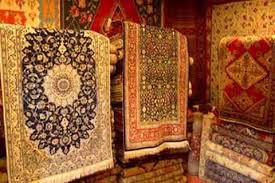Closed looms, lost jobs and scanty sales: the Kashmiri carpet industry is facing a crisis of sorts after the imposition of the Goods and Services Tax (GST). At stake is the future of the Kashmiri craft and, with hundreds of carpet weavers losing their jobs and a once-thriving trade being abandoned in the three months since the new tax regime. Several carpet sellers are now searching for greener pastures like Arshad Hussain, who had been associated with this trade in New Delhi since 1994.
“It seems people have stopped buying Kashmiri silk carpets. Being labour intensive, these carpets did not come cheap even earlier. But with the GST burden, the prices have shot up further,” he said. Now, Hussain is back in Kashmir looking for alternative business options. “There is hardly any business and I will have to do something to feed my family. Carpets are not selling anymore.” In the earlier tax regime, hand-woven carpets were tax-free. People associated with the industry maintain that keeping carpets in exemption list of GST is the only way to keep this centuries-old craft alive.
These high-end carpets, considered prized possessions, are intricate creations born out of painstaking labour, time and skill. A 54-square-foot ‘silk-on-silk’ carpet can take as much as a year, sometimes even more, depending on the intricacy of the design to weave, Salim Bhat, a carpet dealer, said. Bhat said the carpet industry had been surviving because of a chain of people working together — the weaver would put in his craftsmanship while the carpet dealer would invest the money in material and sell it to customers.
“There has to be enough demand for the dealer to continue investing in this industry, which in turn provides livelihood to the weavers. Right now, due to the price rise caused by GST, the chain is breaking down and the industry might disintegrate.”
Bhat said the input credit available to the “real investor” is negligible, taking the sheen off the entire carpet business.
“Those who buy the carpets do it for the hard work of the craftsmen rather than any material. The material input is only 20 to 25 per cent of the total cost of the product. The dealer ends up paying more taxes than should be due,” he said. It is a similar tale for Nazir Ahmad Dar, who owned 30 functioning carpet weaving looms before the GST regime was implemented. Post-GST, he closed down 24 of them. The reason? No new orders.
“We do not have any new orders to work on. We are only completing the previous orders. Right now 80 per cent of my looms are idle,” Dar said.
Shiekh Ashiq, a carpet dealer and member of the carpet export promotion council, fears for the future of the industry. “Carpets are a high-value product and we need to understand that we cannot randomly put GST on this industry. If remedial measures are not taken, this industry will die.”
GST hits carpet business in Kashmir




